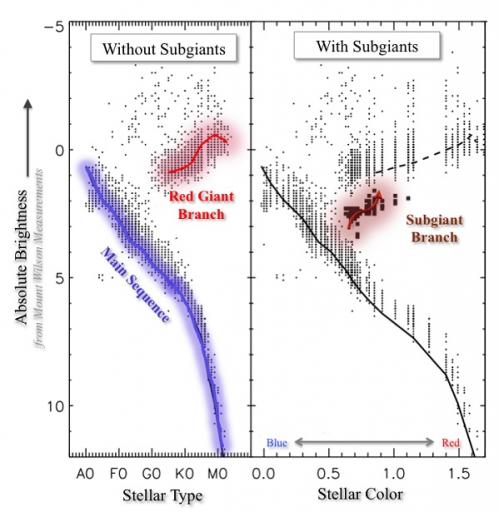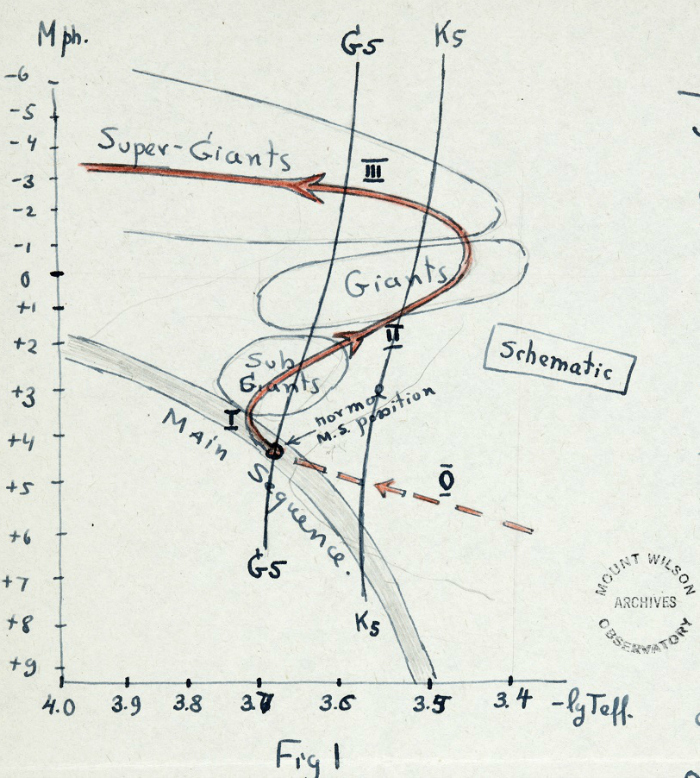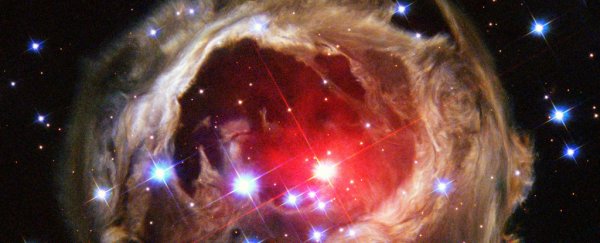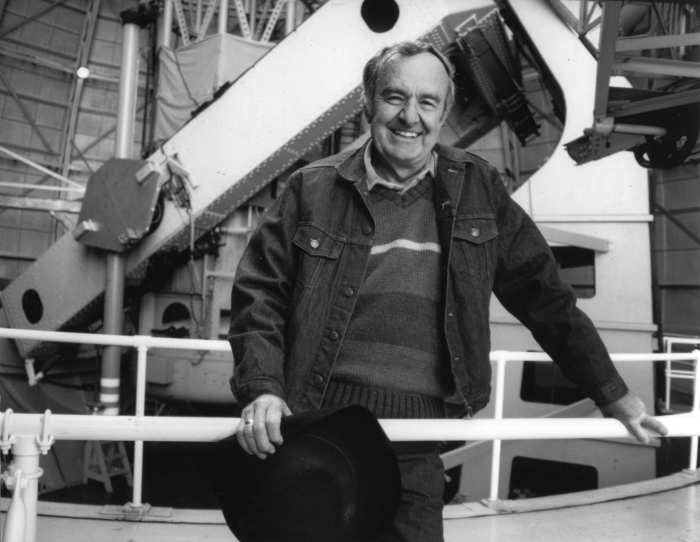A newly published paper reveals that scientists had actually figured out how stars evolve into red giants way back in 1935 - two decades before the hypothesis was officially published by prominent astronomer Allan Sandage.
What's so interesting about this new study is the fact that it was led by Sandage himself, who passed away in 2010, but who dedicated the final years of his life to proving that one of his biggest discoveries had actually been scooped. And if that's not commitment to truth and accuracy in science, then I don't know what is.
Let's step back here a second though, because you're probably wondering who Sandage is, and what this big breakthrough in star evolution is all about.
Here's what happened - since the early 1900s, scientists had been fascinated with trying to categorise the stars in the night sky, based on their brightness and colour, and trying to figure out what those characteristics revealed about them.
They'd done a good job of that, and had figured out that stars could be categorised along the branch of 'main-sequence stars' - the much brighter red giant stars, which you can see in the image below:
 Carnegie Science
Carnegie Science
What no one could figure out at the time was how these two branches were connected, and what it all meant.
Then, in the 1950s, Sandage showed that there was a category of stars called subgiant stars, which served as a link between main-sequence and red giant stars. And in doing so, he demonstrated that stars passed through each of these categories as it evolved.
That research formed the basis of modern stellar evolutionary theory, which we're all taught at school. Stars are born from collapsing clouds of gas and dust, and over millions of years, they become main-sequence stars. Next, they expand and pass through the subgiant stage, before finally becoming red giants.
Our Sun is currently around halfway through its main-sequence phase, and we know all of this, thanks to the work published by Sandage in 1957.
Or, at least, that's what everyone had assumed.
But in the early 2000s, when Sandage was in his 70s and working for the Carnegie Institute of Sciences to compile a history of all the work done by the institute's observatories, he came across an exchange written in 1944 by two prominent astronomers - George Gamow and Walter Adams.
The letters, he quickly realised, were talking about the subgiant phase - more than 10 years before he published his work.
In the correspondence, Gamow and Adams were referring to a huge catalogue of more than 4,000 stars that they'd helped put together between 1914 and 1935 at the Mount Wilson observatory in Los Angeles.
But at the time, the astronomy community had ignored their work, claiming that it was biased, and so it was never published or even properly looked at.
Despite being diagnosed with pancreatic cancer, Sandage was desperate to know whether or not he'd actually taken credit for work someone else had already done, so enlisted the help of Steven Majewski of the University of Virginia, and Rachael Beaton from the Carnegie Institute.
Together, they spent almost a decade comparing the data that had been catalogued back in 1935 with modern data, to fact-check whether it really had been biased, or whether Gamow and Adams had actually been right all along.
"Despite his declining health, we worked incredibly hard in the months preceding [Sandage]'s death - exchanging letters and receiving handwritten comments from him on the manuscript," said Beaton.
When Sandage passed away in 2010, Beaton and Majewski continued their work and now have finally, finally published the results in the journal Publications of the Astronomical Society of the Pacific.
The outcome? They found that Gamow and Adams' 1935 catalogue was actually incredibly accurate, and it predated Sandage's discovery of the subgiant phase of evolution by more than 20 years.
"If this very real discovery of subgiants had been recognised at the time, we could have increased the speed at which stellar evolutionary theory was developed," said Beaton.
Here's a hand-drawn sketch of stellar evolution made by Gamow all the way back in 1944:
 Carnegie Science
Carnegie Science
Despite the fact that Beaton and Majewski worked on the project more than five years without Sandage, they left him as the primary author on the paper, a decision they explain in the afterword:
"[Sandage] is rightfully maintained as the primary author in that he was the originator and true leader of the project, but most especially to recognise his enthusiasm to rectify the historical judgment of the [1935] work and to uphold the reputation of the Mount Wilson spectroscopists."
While this new research doesn't change what we already knew about stellar evolution, it does set the record straight on when the discovery was made.
And the fact that Sandage spent the last years of his life trying to disprove some of his life's greatest work makes him an absolute hero of science. His legacy should live on even brighter as a result.
Here he is at Mount Wilson observatory in the early 1970s:

